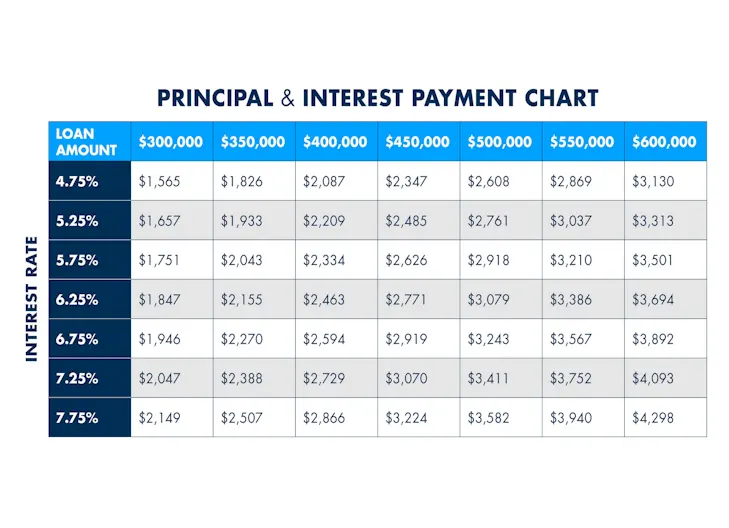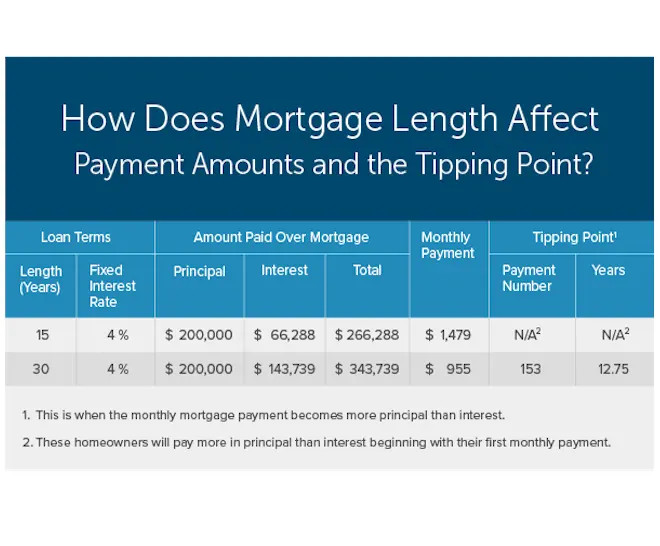November 30th, 2025
The terms of a loan, including the interest rate, repayment period, and fees, significantly impact both your monthly payments and the total cost of the loan.
Here’s a breakdown of how these factors interact:
1. Interest Rate
- Higher Interest Rates: Increase your monthly payments and the total cost of the loan.
- Lower Interest Rates: Decrease your monthly payments and the total cost of the loan.
2. Repayment Term
- Shorter Terms: Result in higher monthly payments but lower total interest paid over the life of the loan.
- Longer Terms: Lead to lower monthly payments but higher total interest paid over the life of the loan.
3. Fees
- Origination Fees: These are upfront costs that can add to the total loan amount.
- Late Fees and Prepayment Penalties: Can increase the overall cost if you miss payments or pay off the loan early.
Example Calculation
To illustrate, let’s consider a $20,000 loan with a 5% annual interest rate over 5 years:
- Monthly Payment: Calculated using the formula : (where (i) is the monthly interest rate and (n) is the number of months:

Impact on Budget
Understanding these factors can help you choose the best loan terms for your financial situation. Using a loan calculator can also help you visualize different scenarios and make informed decisions.
The Impact of Loan Terms on Your Monthly Payments
It is crucial to clearly look at the loan terms impact of your monthly payments and how essential this is for managing your finances effectively.
The term of a loan refers to the length of time over which you will repay the loan, typically expressed in months or years.
Here’s a comprehensive explanation of how different loan terms affect your monthly payments and overall loan cost:
1. Loan Term and Monthly Payments
Shorter Loan Terms:
- Higher Monthly Payments: Loans with shorter terms (e.g., 5 years) generally result in higher monthly payments. This is because the principal amount is divided over a shorter period, so each payment must be larger to fully repay the loan within the term.
- Example: For a $10,000 loan at 5% interest:
- 5-Year Term: Monthly payments would be higher, but the total interest paid over the life of the loan would be lower compared to a longer term.
- Impact: Shorter terms typically lead to higher monthly payments, but they reduce the overall interest paid and the total cost of the loan.
Longer Loan Terms:
- Lower Monthly Payments: Loans with longer terms (e.g., 15 or 30 years) spread the repayment of the principal over a more extended period, resulting in lower monthly payments. This can make the loan more affordable on a monthly basis.
- Example: For the same $10,000 loan at 5% interest:
- 15-Year Term: Monthly payments would be lower compared to a shorter term, but the total amount paid in interest over the life of the loan would be higher.
- Impact: Longer terms lower the monthly payment but increase the total interest paid, resulting in a higher overall cost of the loan.
2. Interest Rates and Loan Terms
Fixed Interest Rates:
- Consistency: With a fixed interest rate, the rate remains the same throughout the term of the loan, providing predictable monthly payments. Changes in the loan term affect the size of these fixed payments but not the rate itself.
- Impact: Shorter terms will have higher fixed payments, while longer terms will have lower fixed payments but will cost more in total interest.
Variable Interest Rates:
- Fluctuations: With variable interest rates, the rate can change over time based on market conditions. While this adds a level of unpredictability to your monthly payments, the impact of loan term on payments remains similar to fixed rates.
- Impact: Even though the rate fluctuates, longer terms generally lead to lower monthly payments and higher overall costs due to accumulated interest.

3. Total Loan Cost
Shorter Terms:
- Lower Total Interest: By repaying the loan faster, you pay less interest over the life of the loan. The principal is paid off more quickly, reducing the amount of interest that accrues.
- Example: A $10,000 loan with a 5% interest rate over 5 years might incur significantly less interest than the same loan over 10 or 15 years.
Longer Terms:
- Higher Total Interest: Spreading the loan repayment over a longer period results in more interest accruing. Although monthly payments are lower, the total interest paid over the life of the loan is higher.
- Example: The same $10,000 loan at 5% interest over 15 years will incur much more interest than a 5-year loan, despite having lower monthly payments.
4. Financial Flexibility and Budgeting
Shorter Terms:
- Budget Impact: Higher monthly payments may strain your budget, but they help you pay off debt faster. This can be advantageous if you have a stable income and prefer to minimize long-term debt.
- Impact: Higher payments can affect your monthly cash flow and limit your financial flexibility but can lead to faster financial freedom.
Longer Terms:
- Budget Ease: Lower monthly payments provide more flexibility in your budget and can ease monthly financial strain. However, you’ll have the debt for a more extended period.
- Impact: Lower payments can make managing your monthly budget easier but may lead to prolonged debt and higher total interest costs.
5. Effect on Loan Eligibility
Loan Term Length:
- Impact on Approval: Lenders might assess your loan eligibility based on your ability to handle monthly payments. A longer term might make you eligible for a larger loan amount due to lower monthly payments, but it also means paying more interest.
6. Prepayment and Early Repayment
Shorter Terms:
- Less Flexibility: Shorter terms mean that any extra payments or prepayments have a more significant impact on reducing the overall interest. You can pay off the loan quicker, saving on interest.
Longer Terms:
- More Opportunity for Prepayment: While you might have lower monthly payments, making extra payments or paying off the loan early will reduce the total interest paid and the loan term.
7. Choosing the Right Term for Your Situation
Short-Term Loans:
- Best if you can afford higher monthly payments and want to minimize the total cost of the loan.
- Suitable for individuals with a stable financial situation who prefer to pay off debt quickly.
Long-Term Loans:
- Best if you need lower monthly payments to fit your budget or if you want to keep more liquidity.
- Suitable for individuals who prefer smaller payments and are comfortable with the increased overall cost of borrowing.
Understanding the impact of loan terms on your monthly payments and total loan cost is crucial for making informed financial decisions. Shorter terms result in higher monthly payments but lower total interest costs, while longer terms lower monthly payments but increase the total interest paid. Assess your financial situation, budget, and long-term goals to choose the loan term that best fits your needs and preferences.

The Impact of Loan Terms on Total Loan Cost
The loan term (the length of time over which you will repay the loan) has a significant impact on the total cost of borrowing.
Here’s a comprehensive explanation of how different loan terms affect the overall cost of a loan, including both the total interest paid and other factors:
1. Understanding Loan Terms
Loan Term:
- The term of a loan is usually expressed in years or months and dictates how long you will have to make payments before the loan is fully repaid.
- Common loan terms include short-term loans (e.g., 1-5 years), medium-term loans (e.g., 5-10 years), and long-term loans (e.g., 10-30 years).
2. Impact on Monthly Payments
Shorter Loan Terms:
- Higher Monthly Payments: To repay the principal amount within a shorter period, monthly payments need to be higher. For instance, a 5-year auto loan will have higher monthly payments compared to a 10-year loan for the same amount.
- Example: A $10,000 loan at 5% interest for 5 years might have monthly payments of approximately $188.71, whereas the same loan over 10 years might have monthly payments of around $106.07.
Longer Loan Terms:
- Lower Monthly Payments: Spreading the repayment over a longer term reduces the amount you need to pay each month. For example, a 30-year mortgage will have lower monthly payments compared to a 15-year mortgage for the same amount.
- Example: The same $10,000 loan at 5% interest over 15 years might have monthly payments of about $79.29, compared to the higher payments of a shorter term.
3. Impact on Total Interest Paid
Shorter Loan Terms:
- Lower Total Interest: Since the loan is repaid more quickly, there is less time for interest to accrue. This results in a lower total amount of interest paid over the life of the loan.
- Example: For a $10,000 loan at 5% interest over 5 years, the total interest paid might be approximately $1,217.38. Compare this to a 10-year term where the total interest paid might be around $2,427.89.
Longer Loan Terms:
- Higher Total Interest: Longer loan terms allow interest to accumulate over a more extended period, resulting in higher total interest payments.
- Example: For a $10,000 loan at 5% interest over 30 years, the total interest paid can be about $8,517.81, significantly higher than a shorter-term loan.
4. Interest Rate Impact
Fixed Interest Rates:
- Consistency: For loans with fixed interest rates, the rate remains constant throughout the term. A longer term will generally result in more total interest paid, as the principal is outstanding for a longer period.
Variable Interest Rates:
- Fluctuations: With variable interest rates, the rate can change over time based on market conditions. Longer terms can lead to more uncertainty regarding total interest paid, as rate increases can significantly affect the total cost.
5. Amortization and Loan Balance
Shorter Loan Terms:
- Faster Principal Repayment: Shorter terms lead to a quicker reduction of the principal balance. Each payment contributes more towards reducing the loan balance rather than just covering interest.
- Impact: The principal balance is paid off more rapidly, reducing the total amount of interest accrued.
Longer Loan Terms:
- Slower Principal Repayment: Longer terms mean that the principal balance is reduced more slowly, with a larger portion of each payment going towards interest, especially in the early years of the loan.
- Impact: The principal balance remains higher for a longer period, leading to more interest being paid over the life of the loan.
6. Monthly Cash Flow and Affordability
Shorter Loan Terms:
- Higher Payments, Lower Total Cost: While the monthly payments are higher, the total cost of the loan is lower due to less accrued interest.
- Affordability: Higher payments may strain your budget, but you benefit from paying off the loan faster and incurring less interest.
Longer Loan Terms:
- Lower Payments, Higher Total Cost: Monthly payments are more manageable, but the total cost of the loan is higher due to greater interest payments.
- Affordability: Lower payments can make the loan more affordable on a monthly basis but result in a higher overall cost.
7. Loan Terms and Financial Goals
Shorter Loan Terms:
- Financial Goals: Suitable for borrowers who can afford higher payments and want to minimize interest costs. It aligns with goals of becoming debt-free sooner.
Longer Loan Terms:
- Financial Goals: Suitable for borrowers seeking lower monthly payments and improved cash flow, even if it means paying more in interest over time. It aligns with goals of maintaining flexibility in monthly budgeting.
8. Examples and Comparisons
Example Calculation:
- A $20,000 loan at 4% interest:
- 5-Year Term: Monthly payments are about $368.35, with total interest of around $1,100.
- 10-Year Term: Monthly payments are about $202.76, with total interest of around $4,331.
- 20-Year Term: Monthly payments are about $121.21, with total interest of around $10,925.
The loan term has a profound impact on the total cost of borrowing.
Shorter terms lead to higher monthly payments but lower total interest paid, whereas longer terms result in lower monthly payments but a higher total cost due to accumulated interest.
When choosing a loan term, consider your budget, financial goals, and the trade-offs between monthly affordability and total loan cost.
Use loan calculators to model different scenarios and make an informed decision based on your specific financial situation and long-term objectives.

Lender Evaluation with Best Loan Terms and Lowest Total Cost of Loan
When seeking loans with favorable terms and low total costs, it’s important to evaluate lenders based on their interest rates, fees, repayment terms, and customer satisfaction. Here are some well-regarded companies in the lending industry known for offering competitive loan terms and low overall loan costs:
1. SoFi
- Overview: SoFi (Social Finance) is renowned for its competitive interest rates and flexible loan terms. It offers personal loans, student loans, and mortgage refinancing with a focus on providing comprehensive financial services.
- Key Benefits:
- Low Interest Rates: Offers competitive rates on personal loans and student loans.
- No Fees: No origination fees, prepayment penalties, or late fees.
- Flexible Terms: Various loan term options to fit different financial needs.
- Additional Benefits: Offers unemployment protection and career services.
2. Marcus by Goldman Sachs
- Overview: Marcus provides personal loans with no fees and competitive interest rates, backed by the stability of Goldman Sachs.
- Key Benefits:
- Low Rates: Offers some of the lowest rates in the industry.
- No Fees: No origination fees, prepayment penalties, or late fees.
- Flexible Terms: Various term lengths available, ranging from 36 to 72 months.
- Easy Management: Simple online application and account management.
3. PenFed Credit Union
- Overview: PenFed Credit Union offers competitive rates on personal loans, auto loans, and mortgages, with favorable terms for its members.
- Key Benefits:
- Low Interest Rates: Competitive rates, especially for members.
- No Fees: Minimal fees associated with loans.
- Flexible Terms: Multiple term options available.
- Member Benefits: Additional financial services and benefits for credit union members.
4. LightStream
- Overview: A division of SunTrust Bank (now Truist), LightStream specializes in offering low-interest personal loans with flexible terms and a streamlined application process.
- Key Benefits:
- Low Rates: Offers some of the most competitive rates in the personal loan market.
- No Fees: No fees for origination, prepayment, or late payments.
- Flexible Terms: Loan terms range from 24 to 144 months, depending on the loan type.
- Fast Approval: Quick online application and funding process.
5. Discover Personal Loans
- Overview: Discover offers personal loans with competitive interest rates and flexible repayment terms, along with strong customer service.
- Key Benefits:
- Competitive Rates: Offers favorable rates with various term lengths.
- No Fees: No origination fees, prepayment penalties, or late fees.
- Flexible Terms: Terms range from 36 to 84 months.
- Additional Features: Cashback rewards for good grades and other incentives for existing customers.
6. Navy Federal Credit Union
- Overview: Navy Federal Credit Union provides loans with favorable terms to its members, including personal loans, auto loans, and mortgages.
- Key Benefits:
- Low Interest Rates: Offers competitive rates, particularly for members.
- No Fees: Minimal fees associated with loans.
- Flexible Terms: Various loan term options.
- Member Benefits: Additional services and benefits for credit union members.
7. Chase Bank
- Overview: Chase offers a range of loan products including personal loans, auto loans, and mortgages, with competitive terms and rates.
- Key Benefits:
- Competitive Rates: Offers favorable rates for personal loans and mortgages.
- Flexible Terms: Various loan term options.
- Customer Service: Strong reputation for customer service and support.
- Additional Features: Offers a range of financial products and services.
8. Upstart
- Overview: Upstart uses artificial intelligence and machine learning to offer personal loans with competitive rates, often serving borrowers with diverse credit profiles.
- Key Benefits:
- Low Rates: Competitive rates based on a broader set of data points.
- Flexible Terms: Terms ranging from 36 to 60 months.
- Quick Process: Fast online application and approval process.
9. Credible
- Overview: Credible is a loan marketplace that allows you to compare offers from multiple lenders, including those known for competitive terms and low costs.
- Key Benefits:
- Loan Comparison: Allows comparison of rates and terms from various lenders.
- No Fees: Typically, no fees for using the comparison tool.
- Flexible Options: Offers a range of loan products from different lenders.
10. LendingClub
- Overview: LendingClub offers personal loans with competitive rates and flexible terms, using a peer-to-peer lending model.
- Key Benefits:
- Competitive Rates: Provides competitive rates with various term options.
- Flexible Terms: Loan terms range from 36 to 60 months.
- No Fees: No prepayment penalties, though there may be an origination fee.
Tips for Evaluating Loan Terms
- Compare Interest Rates: Look for lenders that offer competitive rates and compare these rates across different terms.
- Review Fees: Ensure there are no hidden fees such as origination fees, prepayment penalties, or late fees that could affect the total cost.
- Examine Repayment Terms: Choose a loan with terms that fit your budget and financial goals, balancing between lower monthly payments and overall loan cost.
- Check for Additional Benefits: Consider any additional benefits or features offered by the lender, such as flexible repayment options or financial support services.
By considering these companies and evaluating their loan terms against your financial needs, you can find a loan that offers the best balance of low total cost and favorable repayment terms.
--- article sharing ---
